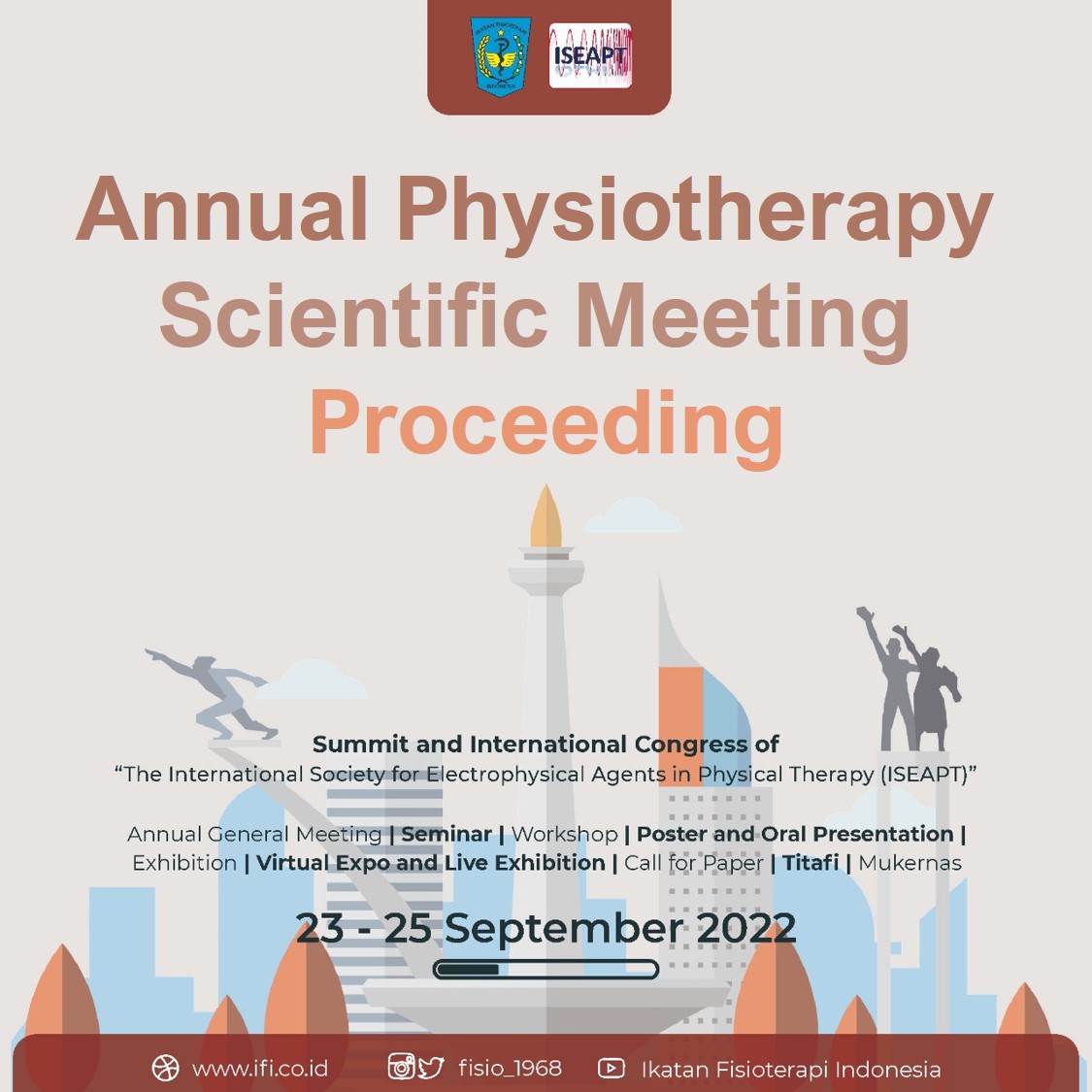Proprioceptive Training Effects on Reducing Ankle Injury Risk in Football Players
Keywords:
Propioceptive Exercise, FIFA 11 , Modified Bass Dynamic Balance Test, Risk of Ankle InjuryAbstract
Introduction : Ankle injury is a common case in soccer players. This condition is due to the ankle as an active facilitator playing an important role in the support of movement when playing. This is one of the factors that can decrease proprioceptive. Proprioceptive is the organism's ability to sense the position and movement of joints. Proprioceptive impairment is caused by ankle injuries such as ankle sprains, ankle strains, ankle dislocations and ankle fractures. The condition of the injury was supported by age, gender, BMI, insufficient warm-up, temperature and humidity, excessive exercise, insufficient rest time and inappropriate exercise facilities. The proprioceptive improvement process needs to be carried out in the form of FIFA 11+ proprioceptive training; this exercise is able to provide an increasing effect on neuromuscular and balance so that these exercises can reduce the risk of ankle injury in soccer players. Methods: The study applied experimental with a quasi-experimental approach to pre- and post-test one grub design treatment, sampling technique using purposive sampling, a sample of 21 people with an exercise program 3x a week for 4 weeks. The research instrument used a modified bass dynamic balance test, and the data analysis used descriptive statistical test, normality test and hypothesis testing. Results: Hypothesis testing using paired sample t-test showed that there was an effect of giving proprioceptive training to reduce the risk of ankle injury in soccer players (P=0.00 P<0.05). Conclusion: There is an effect of giving proprioceptive training to reduce the risk of ankle injury in soccer players.
Downloads
References
Al attar, w. S. A. Et al. (2017) ‘adding a post-training fifa 11+ exercise program to the pre-training fifa 11+ injury prevention program reduces injury rates among male amateur soccer players: a cluster-randomised trial’, journal of physiotherapy, 63(4).
Bengtsson, h., ortega gallo, p. A. And ekstrand, j. (2021) ‘injury epidemiology in professional football in south america compared with europe’, bmj open sport and exercise medicine, 7(4). Doi: 10.1136/bmjsem-2021-001172.
Emily, n. F. And wibisono, h. (2021) ‘literature review: hubungan dynamic balance terhadap resiko terjadinya cedera pada pemain sepak bola’, indonesian journal of physiotherapy, 1(1), p. 21. Doi: 10.52019/ijpt.v1i1.2577.
Kolokotsios, s. Et al. (2021) ‘ankle injuries in soccer players: a narrative review’, cureus, 13(8), pp. 8–14. Doi: 10.7759/cureus.17228.
Mandorino, m. Et al. (2022) ‘injury incidence and risk factors in youth soccer players: a systematic literature review. Part ii: intrinsic and extrinsic risk factors’, biology of sport, vol. 40 no(doi: https://doi.org/10.5114/biolspo rt.2023.109961), pp. 3–25. Doi: 10.5114/biolsport.2023.10996. Costa e silva, l., teles, j. And fragoso, i. (2022) ‘sports injuries patterns in children and adolescents according to their sports participation level, age and maturation’, bmc sports science, medicine and rehabilitation, 14(1), pp. 1–9. Doi: 10.1186/s13102-022- 00431-3.
Nur fitranto1, eko prabowo2, l. A. H. (2021) ‘dampak pemberian fifa 11 plus warm up terhadap kualitas power shooting pada siswa ekstrakulikuler sepakbola sma negeri 4 kota tangerang’, jurnal olahraga kebugaran dan rehabilitasi, 1(e-issn: 2798- 0928 p-issn: 2276-3927), pp. 118–124.
P. Bollars, l. Vanlommel, k. Van crombrugge, k. Corten, j. Bellemans s. Mufty (2015) ‘1st needed (2)’, injuries in male versus female soccer players : epidemiology of a nationwide study s., 81, pp. 289–295.
Putri, m. W. (2019) ‘hubungan strenght, endurance, dribbling, passing dan shooting terhadap resiko cedera olahraga’, prosiding senfiks (seminar nasional fakultas ilmu kesehatan dan sains), 1(1), pp. 1–19.
Richmond, s. A. Et al. (2016) ‘examining measures of weight as risk factors for sport-related injury in medicine adolescents’, journal of sports, 2016, pp. 1–5. Doi: 10.1155/2016/7316947.
Rokaya, a. Et al. (2021) ‘relationship between dynamic balance and agility in trained soccer players – a correlational study’, international journal of scientific and research publications (ijsrp), 11(7), pp. 127–132. Doi: 10.29322/ijsrp.11.07.2021.p11517.
Robles-palazón, f. J. Et al. (2021) ‘epidemiology of injuries in male and female youth football players: a systematic review and meta-analysis’, journal of sport and health science, 00, pp. 1–15. Doi: 10.1016/j.jshs.2021.10.002.
Simatupang, n. And suprayogi, m. K. (2019) ‘survey cedera olahraga pada atlet sepak bola pplp sumatera utara’, sains olahraga : jurnal ilmiah ilmu keolahragaan, 3(1), p. 55. Doi: 10.24114/so.v3i1.13062.
Sudirman, a., mahyuddin, r. And asyhari, h. (2021) ‘memahami faktor penyebab terjadinya cedera dalam permainan sepakbola’, jendela olahraga, 6(2), pp. 1–9. Doi: 10.26877/jo.v6i2.8273.
Syafrianto, d., muchlis, a. F. And ayu, n. P. (2021) ‘strenghthening exercise dan proprioceptive exercise pada functional ankle instability donal’, jurnal sporta saintika, 6(1), pp. 19–27.
Zech, a. Et al. (2022) ‘sex differences in injury rates in team-sport athletes: a systematic review and meta-regression analysis’, journal of sport and health science, 11(1), pp. 104–114. Doi: 10.1016/j.jshs.2021.04.003.
Downloads
Published
How to Cite
Issue
Section
License
Copyright (c) 2022 Ummy Aisyah Nurhayati, Moh. Ali Imron, Niken Tri Wiyandari

This work is licensed under a Creative Commons Attribution 4.0 International License.


